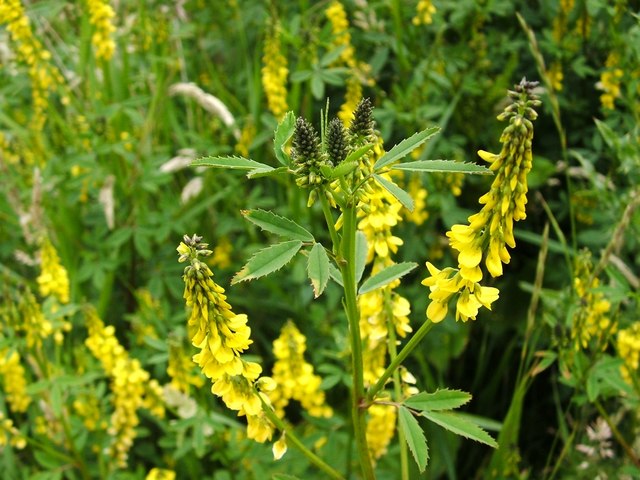
Tall melilot (Melilotus altissima) is a plant that grows
wild in waste places such as roadsides and in woods. It is fairly common
throughout Great Britain, although rarer in northern Scotland. It is not a
native plant, having been introduced from the European Continent in the 16th
century for use by herbalists.
Tall melilot deserves its label, as it grows up to 48 inches
(120 centimetres) high. The branched stems carry stalked leaves (with three
leaflets) and long slender flower spikes. The flowers, which appear from June
to August, have deep yellow petals that hang down. As the plant’s name might
suggest, melilot is a source of wild honey and it is attractive to bees and
hoverflies. It needs to be visited by large insects because the weight of one
landing on a flower causes the petals to be pressed downwards and the stiff
stigma to touch the underside of the insect’s body where it will be able to be
fertilised by pollen that has been carried from other flowers.
The tiny black seed-pod is egg-shaped and covered in downy
hairs.
Tall melilot contains coumarin, an aromatic substance, in
its leaves and stalks, and this causes the plant to smell pleasantly of
new-mown hay when dried. As mentioned above, the plant was formerly favoured by
herbalists, who used it to produce ointments and poultices for the reduction of
swellings, blisters and bruises. It was also used in the 19th
century for the relief of tired eyes when the flowers were infused in
camphorated spirit.
Tall melilot is therefore one of many plants the beneficial
use of which is now generally ignored. There is often a good reason for not
treating ailments with products gathered from the wild, but there are also
cases where to do so would cause no harm and should perhaps be encouraged.
Maybe tall melilot is one of the latter.
© John Welford
No comments:
Post a Comment